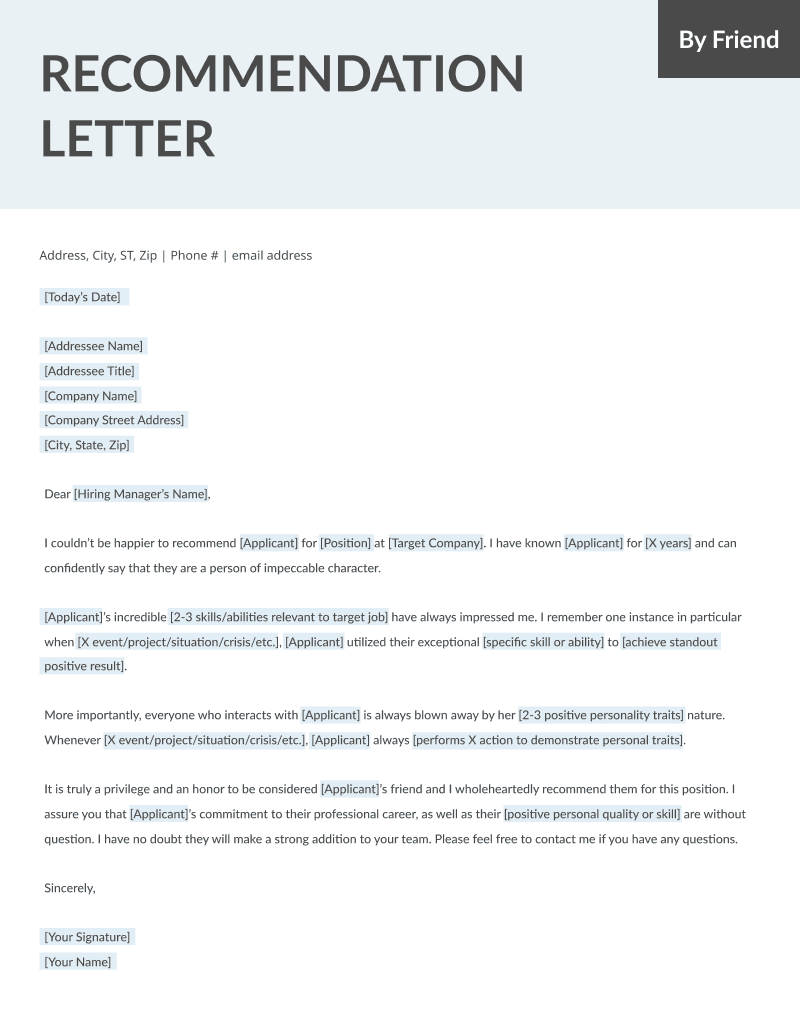

Preferably, keep your paragraphs reasonably short to enhance readability. The convention is to single-space your type, skip lines between each paragraph, and either consistently choose no indentation for paragraphs or indent each paragraph one-half inch. Archaic greetings such as “Dear Sir or Madam” should be avoided, but some writers still favor the generic “To Whom it May Concern.” If you do not have a person’s name to address the letter to, let the greeting reflect the circumstances to which the letter is tailored-e.g., “Dear Graduate School Selection Committee.” Text Formatting and Paragraph Lengthįont sizes of between 10 and 12 and standard publishing fonts such as Times New Roman and Century are preferred. Get the student to give you an actual name if possible. Some writers include the target employer’s or review committee’s address at the top left margin beneath the letterhead and date others simply begin with a greeting directed to the name of the individual heading the group that will review your letter. Date the letter two or so spaces beneath the letterhead at the left or right margin. If you attach a separate letter to a form, a letterhead is still appropriate. If you use some other letterhead, such as that of an inter-office memo or personal stationery, you have not clearly announced your connection to the student and you’ve weakened the letter’s suitability.
/how-to-write-a-reference-letter-2064324_final-afd9227e76914b0cbb66df4e95874c6a.png)
The best letterhead is that of the department, college, or other organization with which you are most closely affiliated.

Letter of reference professional#
Thanks to computer software, professional looking letterheads are easily generated, and many faculty use paper with a pre-printed letterheads for their first page. Many writers also provide an appropriate subject line at the top of any pages after the first one (e.g., “Letter of Reference for Janet Lerner-”). The letterhead should not be included on any pages except the first one, but be sure to number and perhaps date any subsequent pages in case they become separated.
Letter of reference full#
As faculty who sit on review boards will confirm, letters of three pages or more are simply too lengthy (and often too full of irrelevant detail) for a selection committee to consider efficiently pare them back. When students apply for graduate school or a national scholarship, two-page letters are the norm, and very short letters leave candidates at a clear disadvantage. In most circumstances, however, your letter should fill a page neatly and perhaps go on to a second page. For instance, if the student is seeking a military position that you have little knowledge of and your evaluation form included a detailed checklist, your letter might be just one or two paragraphs long, efficiently endorsing the student within the context of the whole application. To determine the appropriate length for a letter, balance your knowledge of the student with the weight and opportunity of what the student is applying for. In other words, a longer letter in the right circumstances gives favor to the candidate, as long as detail in the letter is relevant. Another study noted that “the more detail in the letter, the more persuasive” (2). In one study that assessed over 500 letters of recommendation, results indicated that “the strength of the cooperative relationship between recommenders and applicants influenced the favorability and length of the letters” (1). The standards are well-established, as discussed below.
Letter of reference software#
Although most faculty can readily make their letters look good at a glance thanks to computer software and templates, many still puzzle through the fundamentals of appropriate length and overall form.


 0 kommentar(er)
0 kommentar(er)
